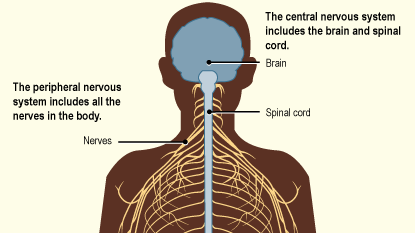- Home
- Parents Home
- Allergy Center
- Asthma Center
- Cancer Center
- Diabetes Center
- A to Z Dictionary
- Emotions & Behavior
- First Aid & Safety
- Food Allergy Center
- General Health
- Growth & Development
- Flu Center
- Heart Health
- Homework Help Center
- Infections
- Diseases & Conditions
- Nutrition & Fitness Center
- Play & Learn Center
- School & Family Life
- Pregnancy Center
- Newborn Center
- Q&A
- Recipes
- Sports Medicine Center
- Doctors & Hospitals
- Videos
- Para Padres
- Home
- Kids Home
- Asthma Center
- Cancer Center
- Movies & More
- Diabetes Center
- Getting Help
- Feelings
- Puberty & Growing Up
- Health Problems of Grown-Ups
- Health Problems
- Homework Center
- How the Body Works
- Illnesses & Injuries
- Nutrition & Fitness Center
- Recipes & Cooking
- Staying Healthy
- Stay Safe Center
- Relax & Unwind Center
- Q&A
- Heart Center
- Videos
- Staying Safe
- Kids' Medical Dictionary
- Para Niños
- Home
- Teens Home
- Asthma Center
- Be Your Best Self Center
- Cancer Center
- Diabetes Center
- Diseases & Conditions
- Drugs & Alcohol
- Expert Answers (Q&A)
- Flu Center
- Homework Help Center
- Infections
- Managing Your Medical Care
- Managing Your Weight
- Nutrition & Fitness Center
- Recipes
- Safety & First Aid
- School & Work
- Sexual Health
- Sports Center
- Stress & Coping Center
- Videos
- Your Body
- Your Mind
- Para Adolescentes
Peripheral Nervous System
What Is the Peripheral Nervous System?
The peripheral nervous system is a network of nerves that runs throughout the head, neck, and body. It carries messages to and from the central nervous system (the brain and spinal cord). Together, the peripheral nervous system and the central nervous system form the nervous system.

What Does the Peripheral Nervous System Do?
The brain and body send information back and forth all the time. The peripheral (per-IF-er-ul) nervous system is in charge of delivering these messages. Some kinds of messages begin in the eyes, ears, nose, tongue, and skin and move to the brain. Other kinds of messages begin in the brain and then move to other parts of the body. For example, if you smell smoke, the message goes from your nose to your brain. Then your brain allows you to think about what is happening and sends messages to your muscles to move to get you out of danger.
The peripheral nervous system is at work all the time, even when we sleep. It sends messages to the heart to keep it beating, to the muscles that we use for breathing, and to the digestive system to keep food moving along.
What Are the Parts of the Peripheral Nervous System?
The peripheral nervous system has two parts:
- The somatic (so-MA-tik) nervous system controls actions that we do by choice (voluntarily), like walking, eating, or playing an instrument.
- The autonomic (ah-tuh-NOM-ik) nervous system controls processes that happen automatically (involuntarily), like breathing, digestion, sweating, and shivering. The autonomic nervous system has two parts: the sympathetic nervous system and the parasympathetic nervous system. The sympathetic nervous system gets the body ready to react quickly to stressful or scary events. The parasympathetic nervous system controls body functions when we're calm and resting.